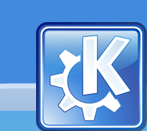



Working at the command line is not as daunting a task as you would think. There is no special knowledge needed to use the command line as it is a program like everything else. Most things in Linux can be done using the command line. Although there are graphical tools for most programs, sometimes they are just not enough. This is where the command line comes in handy.
The terminal is often called the command prompt or the shell. In days gone by, this was the way the user interacted with the computer; however, Linux users have found that the use of the shell can be quicker than a graphical method and still holds some merit today. Here you will learn how to use the terminal.
The original use of the terminal was as a file browser, and indeed it is still used as a file browser. You can use the terminal as a file browser to navigate your files and undo the changes that have been made.
The ls (LiSt) lists files in different colors with full formatted text
The mkdir (MaKeDIRectory) command will create a directory.
The cd (Change Directory) command will change from your current directory to any directory you specify.
The cp (CoPy) command will copy any files you specify. The cp -r command will copy any directories you specify.
The rm (ReMove) command will delete any filename you specify. The rm -r command will remove any directory you specify, and all its contents.
The mv (MoVe) command will move/rename any file or directory you specify.
The locate command will search for any filename you specify. It uses an index of the files on your system to work quickly. To update this index, run the command sudo updatedb. This command is run automatically each day if you leave your computer on. It needs to be run with administrative privileges (see „Root und Sudo“).
You can also use wildcards to match one or more files, such as "*" (for all files) or "?" (to match one character).
The usual method of command-line access in Kubuntu is to start a terminal (see „Starting the Terminal“ above) , however sometimes it is useful to switch to the real console:
Use the Ctrl-Alt-F1 shortcut keys to switch to the first console.
To switch back to Desktop mode, use the Ctrl-Alt-F7 shortcut keys.
There are six consoles available. Each one is accessible with the shortcut keys Ctrl-Alt-F1 to Ctrl-Alt-F6.